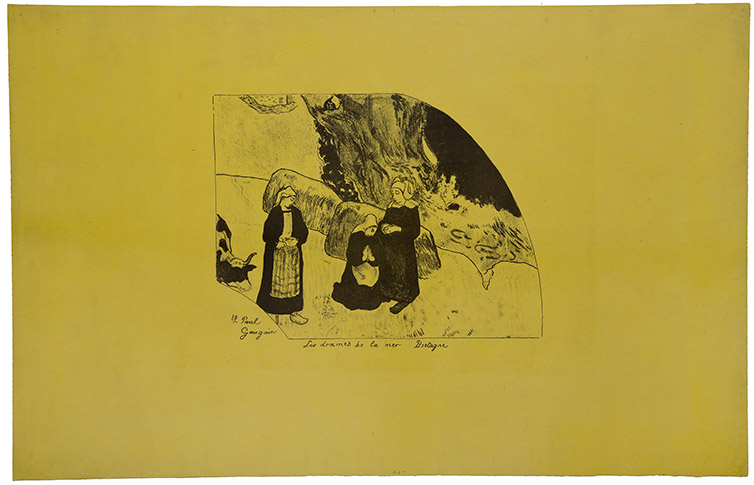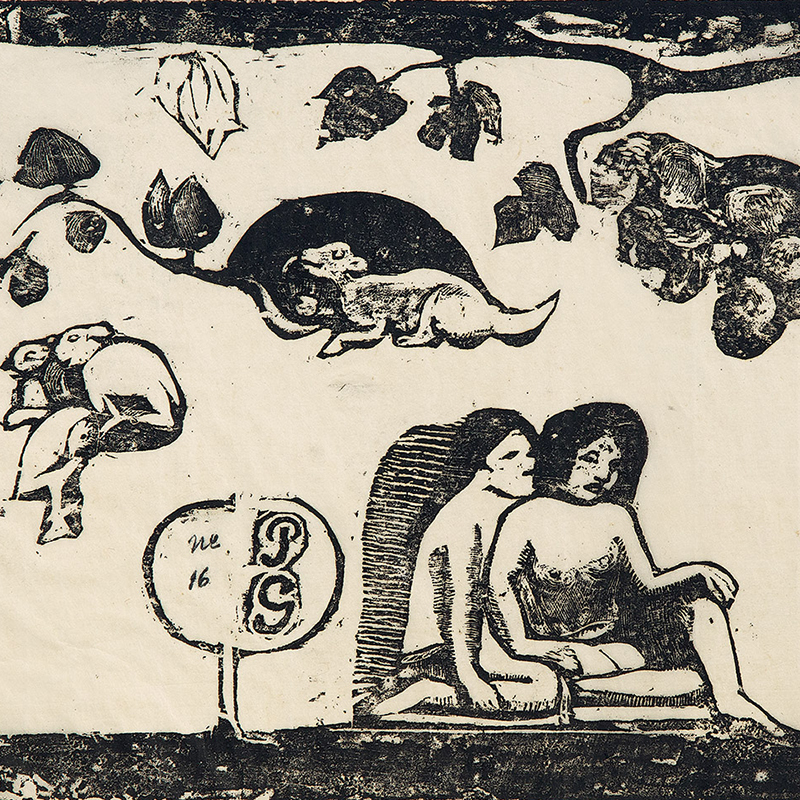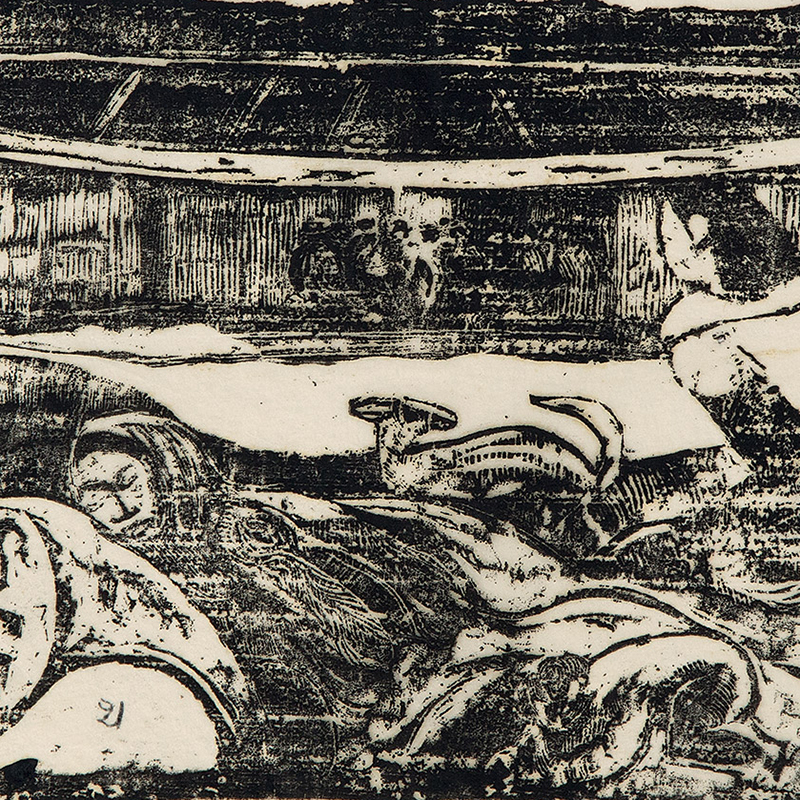Paul Gauguin
Parigi 1848 - Atuona 1903
The tragedies of the sea, Brittany
1889
197 x 279 mm; sheet 320 x 496 mm
Signed on the zinc in lower left corner 89 (in reverse) Paul Gauguin. Titled on the zinc beneath the borderline Les drames de la mer Bretagne.
Guérin 7; Mongan, Kornfeld, Joachim 2 Ab
Provenance:
Unidentified collector’s mark on the verso,Two indistinct letters in a circle, in black ink.
This print is from the Suite Volpini, album de zincographies, shown by the artist at the Exposition du Groupe Impressioniste et Synthétiste held at the Café Volpini, Champ-de-Mars, in June 1889. The set comprises a cover, a print of Leda and the Swan and ten compositions primarily of women the artist encountered in the South of France.
The present example represents Gauguin’s very first venture into the field of printmaking. Around 1900 Ambroise Vollard published a later edition in black ink on white Japanese Simili paper. The precise number of prints it included is not known, but it probably numbered around 50 impressions.
Related material: drawings executed in Brittany in 1886 and an oil painting, Vaches au Bord de la Mer 1886 (Wildenstein 206).
Fine impression from the first edition of approximately 30-50 sheets, printed by E. Ancourt in black ink on canary yellow wove paper, and published by the artist in 1889. The colour of the paper is bright and fresh. The tip of the lower left corner has been restored, otherwise the sheet is in excellent condition. This print is very rare; we know of only 19 impressions from the first edition.
Price: 11,500.00 €
Information on the master
Gauguin was born in Paris, but his family moved to Peru when he was a young child. His journalist father died on the journey to South America. Eventually returning to France, Gauguin took to the seas as a merchant marine, he was also in the French Navy for a time and then worked as a stockbroker. In 1873 he married a Danish woman named Mette Gad. The couple eventually had five children together. Gauguin began painting in his spare time but quickly became serious about his hobby. One of his works was accepted into the Salon of 1876 in Paris. Gauguin met Camille Pissarro around this time, and his work attracted the interest of the Impressionists. Gauguin was invited to show at the group's fourth exhibition in 1879, and his work appeared among the works of Pissarro, Edgar Degas, Claude Monet and other artists.
By 1883, Gauguin had stopped working as a stockbroker so that he could fully devote himself to his art. He also soon parted ways from his wife and children, and eventually went to Brittany, France. In 1888, Gauguin created one of his most famous paintings, Vision of the Sermon. In the same year Gauguin spent several weeks together with his friend Van Gogh in the latter's home in Arles, but their time together ended after van Gogh pulled a razor on Gauguin during an argument.
In 1891, Gauguin sought to escape the constructions of European society, and he thought that Tahiti might offer him some type of personal and creative freedom. Upon moving to Tahiti, Gauguin was disappointed to find that French colonial authorities had westernized much of the island, so he chose to settle among the native peoples, and away from the Europeans living in the capital.
Around this time, Gauguin borrowed from the native culture, as well as his own, to create new, innovative works. In La Orana Maria, he transformed the Christian figures of the Virgin Mary and Jesus into a Tahitian mother and child. Gauguin made many other works during this time, including a carved sculpture.
In 1893, Gauguin returned to France to show some off his Tahitian pieces. The response to his artwork was mixed, and he failed to sell much. Critics and art buyers didn't know what to make his primitivist style. Before long, Gauguin returned to French Polynesia. He continued to paint during this time, creating one of his later masterpieces, the canvas painting Where Do We Come From? What Are We? Where Are We Going?, Gauguin's depiction of the human life cycle.
Other works of the master


